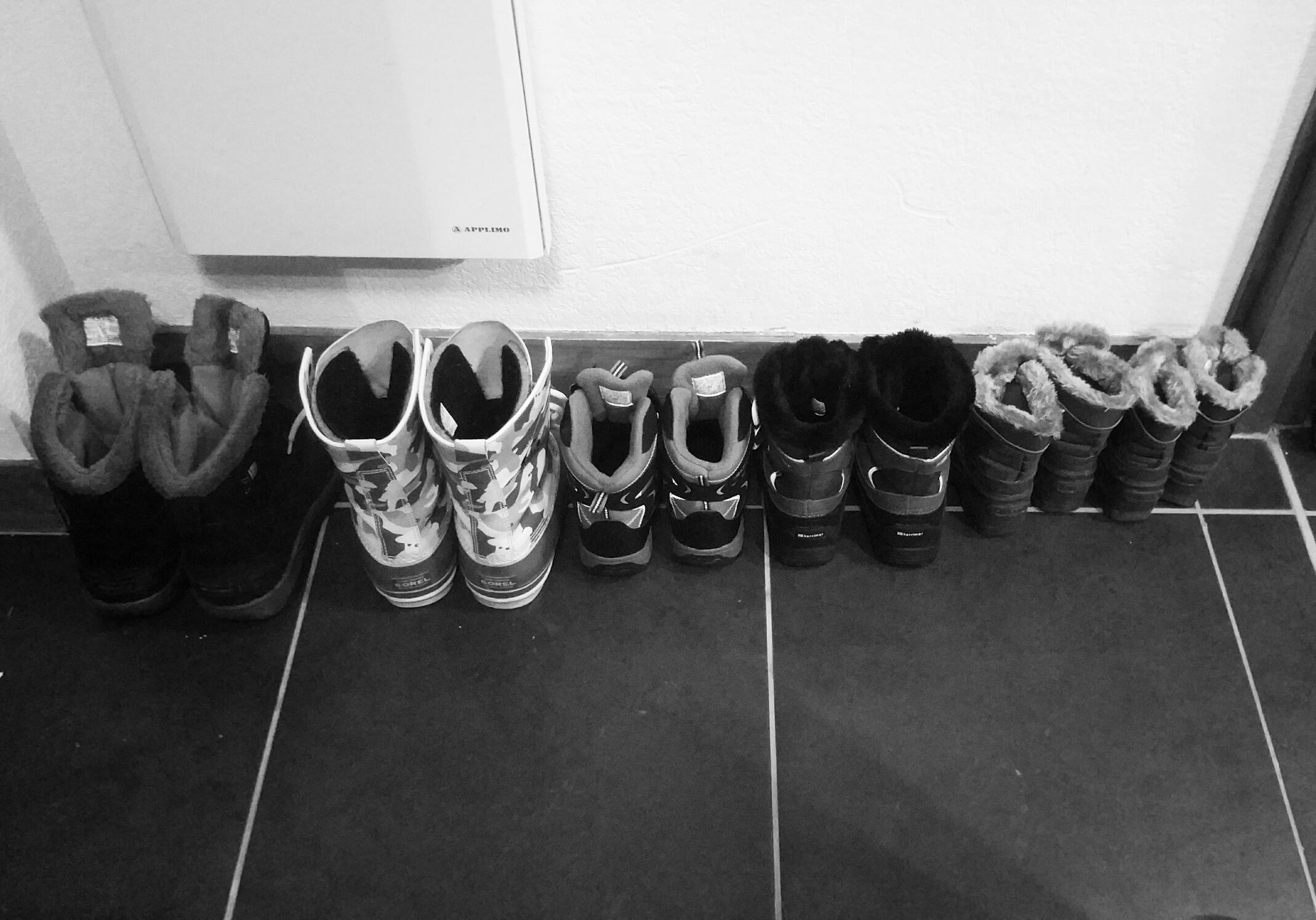Shoe shopping with children can be a total nightmare. Once you’ve gone beyond the buzz and excitement of that first special trip to Clarks to get their feet measured for their first pair of shoes, taken their photograph and popped it in the memory book – well everything after that can be a bit different.
Many parents have horror stories to tell about shoe shopping with their children and many try to avoid it where possible. This can result in shoes not being fitted correctly. However, many parents have also had situations where children have not been measured correctly in shoe shops, resulting in shoes not being the right size.
Girls boots/shoes, boys boots and shoes, sandals, slippers, wellies – the footwear children need can seem endless sometimes, so getting it wrong is a problem on so many levels.
Are their shoes the correct size?
Blitzresults conducted a survey and found that 65% of all children are wearing shoes that are too small. Of these, 47% are one size too small and 18% are even two. Only 35% are wearing the correct size and only 11% of those have “room to grow”.
Improperly fitting shoes can cause hallux valgus. This is a foot deformity, it happens when the big toe starts to angle inward, which causes a swollen lump just below the big toe. A study conducted by the National Health Institute found that almost 30% of children had irreversible foot deformities, like hallux valgus.
Tips for the best fit
To help you make sure you are buying shoes that fit your children properly, keep the following advice in mind:
- Go by the longer foot: The right and left foot are rarely the same length. A difference of up to half an inch is normal, that’s almost one whole shoe size. Therefore, parents should always go by the longer foot when buying shoes.
- Don’t rely on the shoe size: Shoe manufacturers label shoes with standard sizes, the ones we all know. But, there is no mandatory industry standard for shoe sizing, so each brand will vary. Be sure to try on every shoe carefully.
- Give them room: Most parents are aware that feet need some room, but usually underestimate the actual room needed. At least ½ inch of additional room is optimal, it’s the only way little ones can roll their foot properly when walking.
- Do a regular check: Tim Lilling, expert at blitzresults.com, tells us that, “Because the sense of touch isn’t fully developed in children yet, they have a tendency to squeeze their feet into shoes that are much too small, they don’t even notice it. Therefore, parents must measure their children’s feet every 2 months.” A measuring guide, useful conversion tools and a lot of information on how to choose shoes with the perfect fit can be found here.
‘Tricks’ to avoid
Unfortunately, many parents still use these “tricks” to judge whether shoes fit:
- Trick: Hold shoe to foot. The shoe sole is held up to the child’s foot to estimate the size, but the length on the inside of the shoe can’t be estimated from the outside, and is often much shorter than you’d expect (lining, seams, foot bed). Better: Use an appropriate measuring device.
- Trick: The thumb test. The thumb presses on the toe of the shoe to see how much room there is to grow. The problem; children often draw their toes up by reflex, so the foot is rolled under. It may seem like there’s enough room, although, in reality, the shoes are too small. Using the heel test is just as bad for judging free space in the heel. Many children push their feet forward until their toes are crammed in. Better: Carefully feel your child´s foot inside the shoe. Place one hand on the front of the shoe, so the child can’t draw their toes up. Then, with the other hand, check the position of the toes. This way you can feel whether there is enough room to grow.
- Trick: Size comparison using a stencil. The shape and size of the foot is traced and compared with the shoe sole, but this comparison is usually imprecise. Better: If there is a removable insole, take it out and place the foot on the insole, there should be 1/3 inch of space behind the heel and half an inch in front of the toes.
- Trick: Asking them how it feels. Parents ask children; “Does the shoe fit?” Unfortunately, the answer will likely be wrong. Often, the nerves in kid’s feet are not fully developed yet and their awareness of pain is clearly lower than an adult’s, so, kids don’t realize if the shoe fits. Better: First and foremost, measure their feet.
Main findings of the survey
- 65% of all children are wearing shoes that are too small. Of these, 47% are one size too small and 18% are even two.
- Only 35% are wearing the correct size, and only 11 % of those have room to grow.
- Of the parents surveyed, 52% said they’d never measured their child’s foot length, but instead relied solely on sensorial and visual tests.
About the study
2109 parents were asked about their children’s foot length and shoe size. Afterward, special measuring devices and instructions on how to measure feet properly were given to the parents. The measurement values were used to calculate the actual shoe size, then these results were compared with the parents’ hit or miss values.
What is your experience with children and shoes? How do you ensure they are a good fit?




